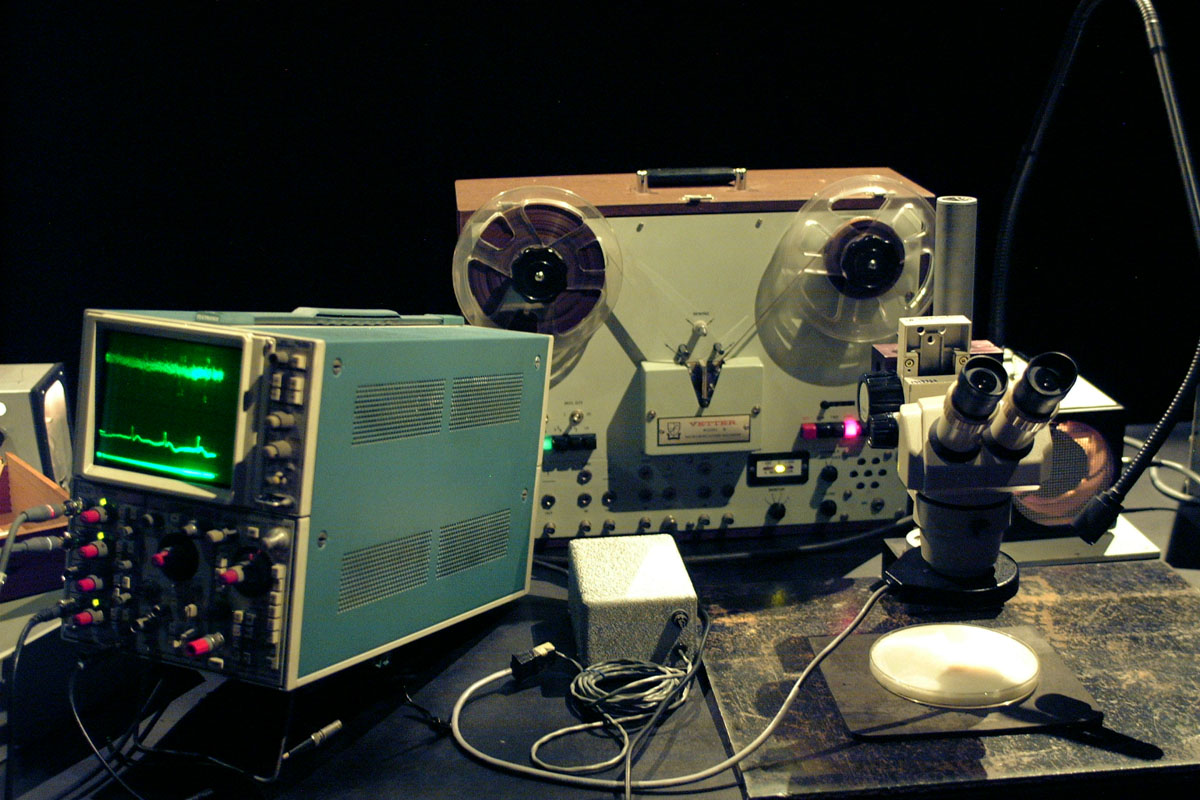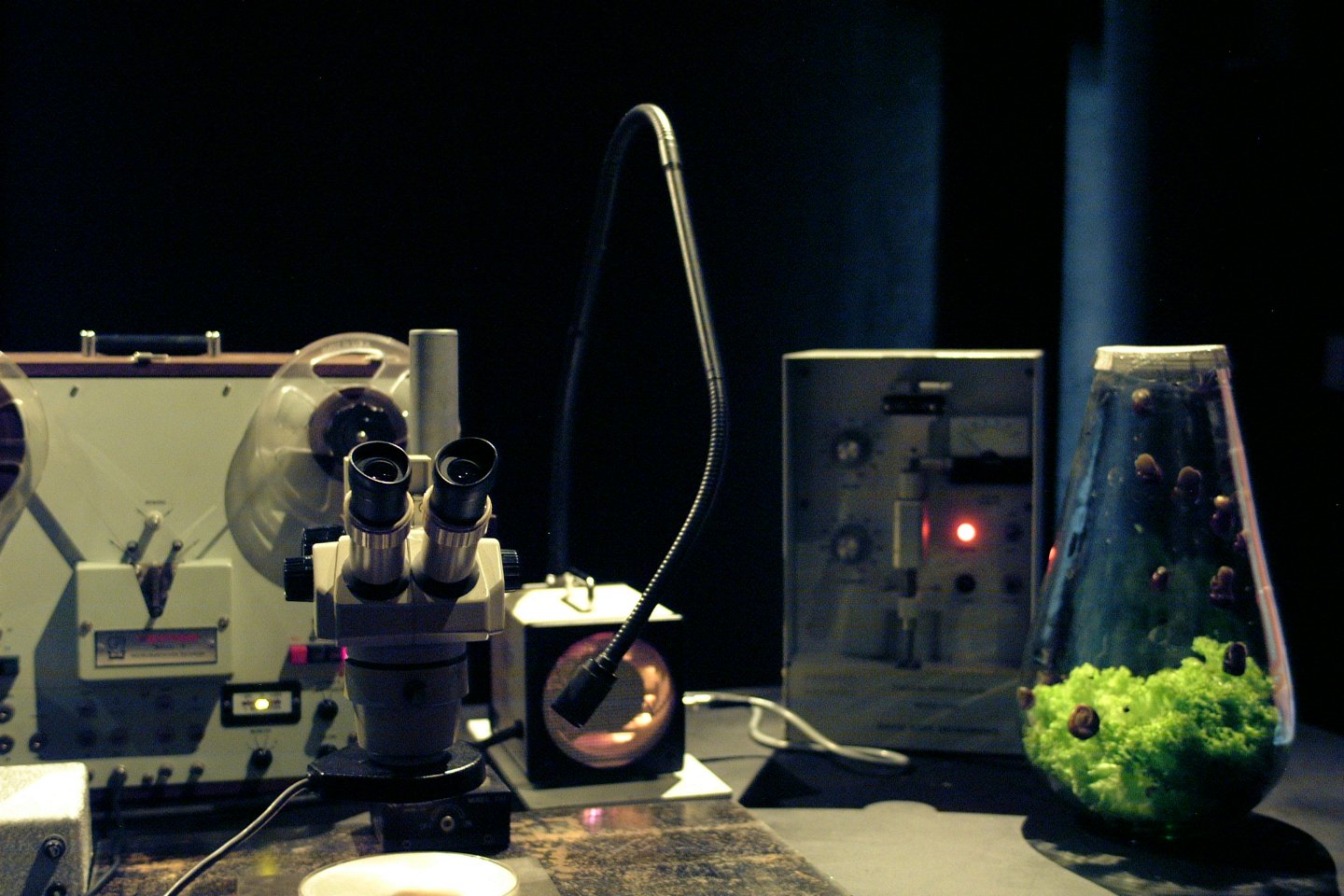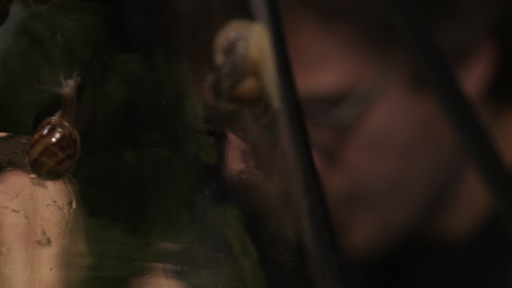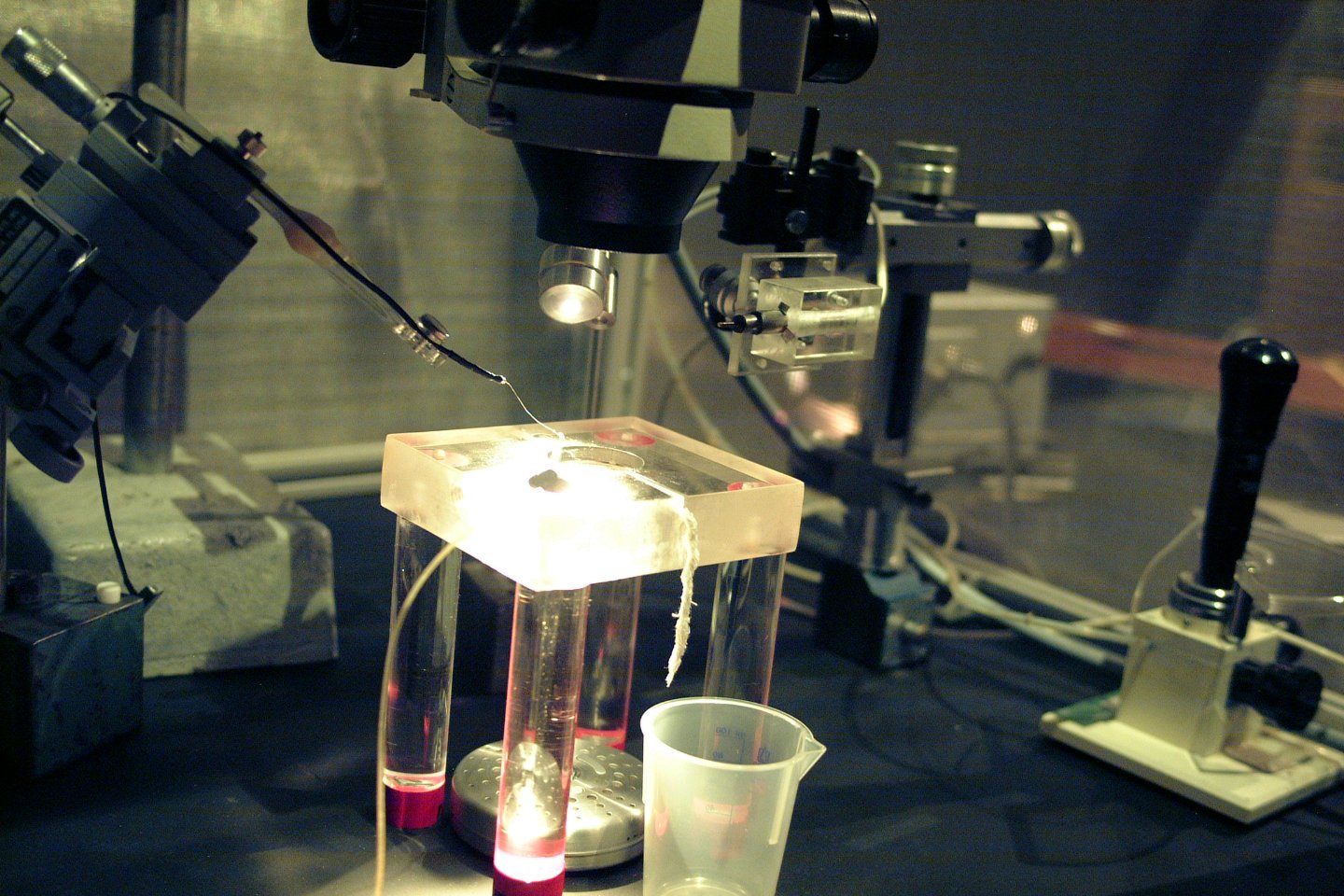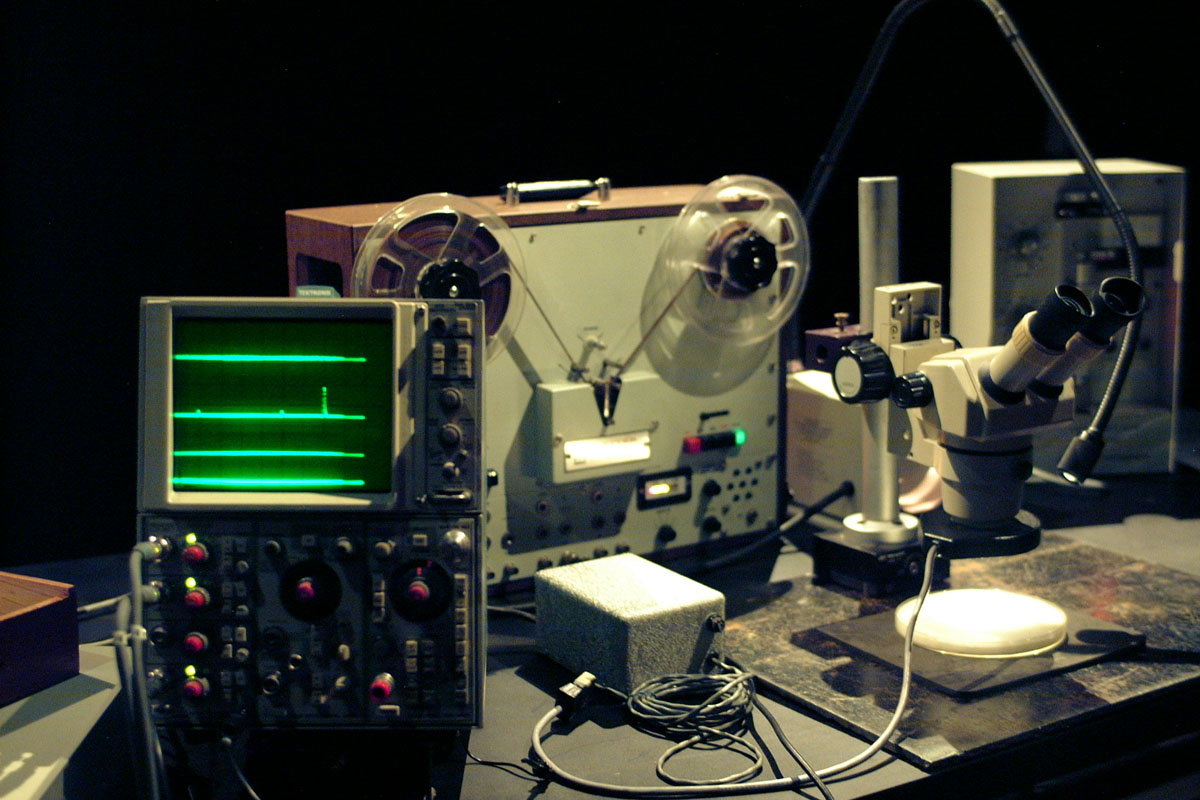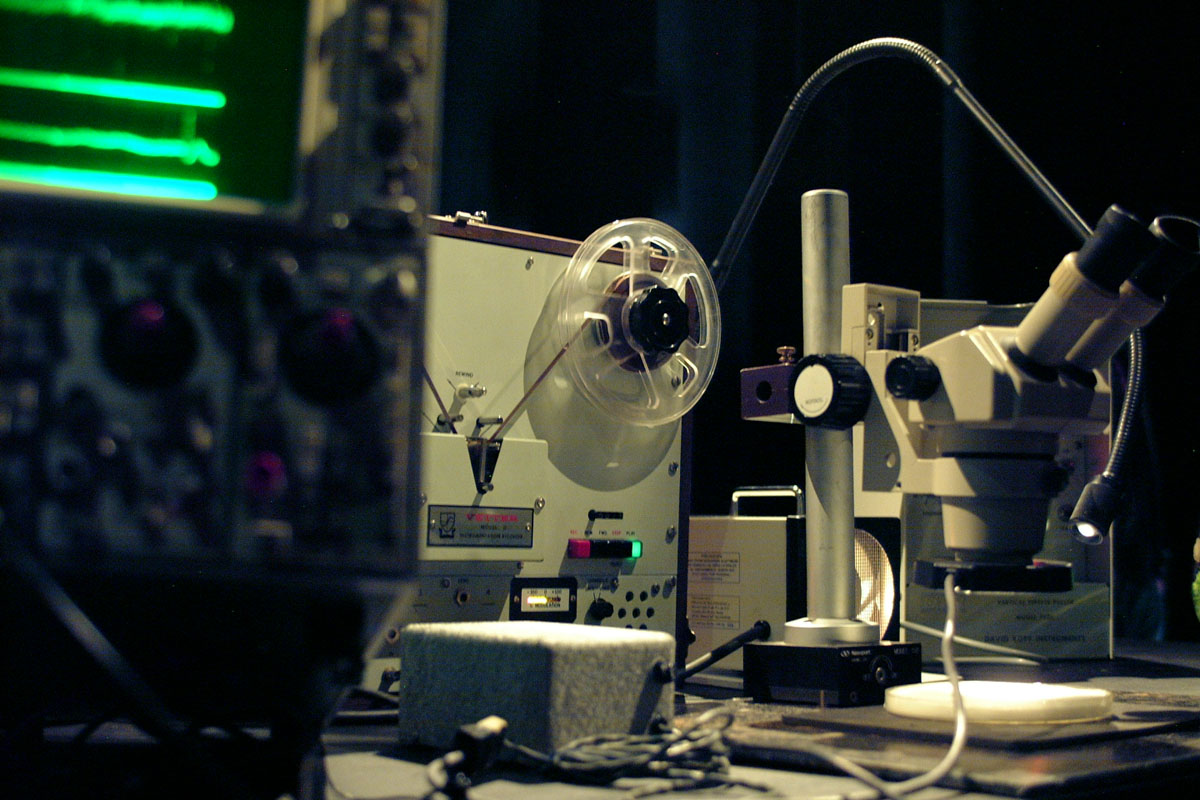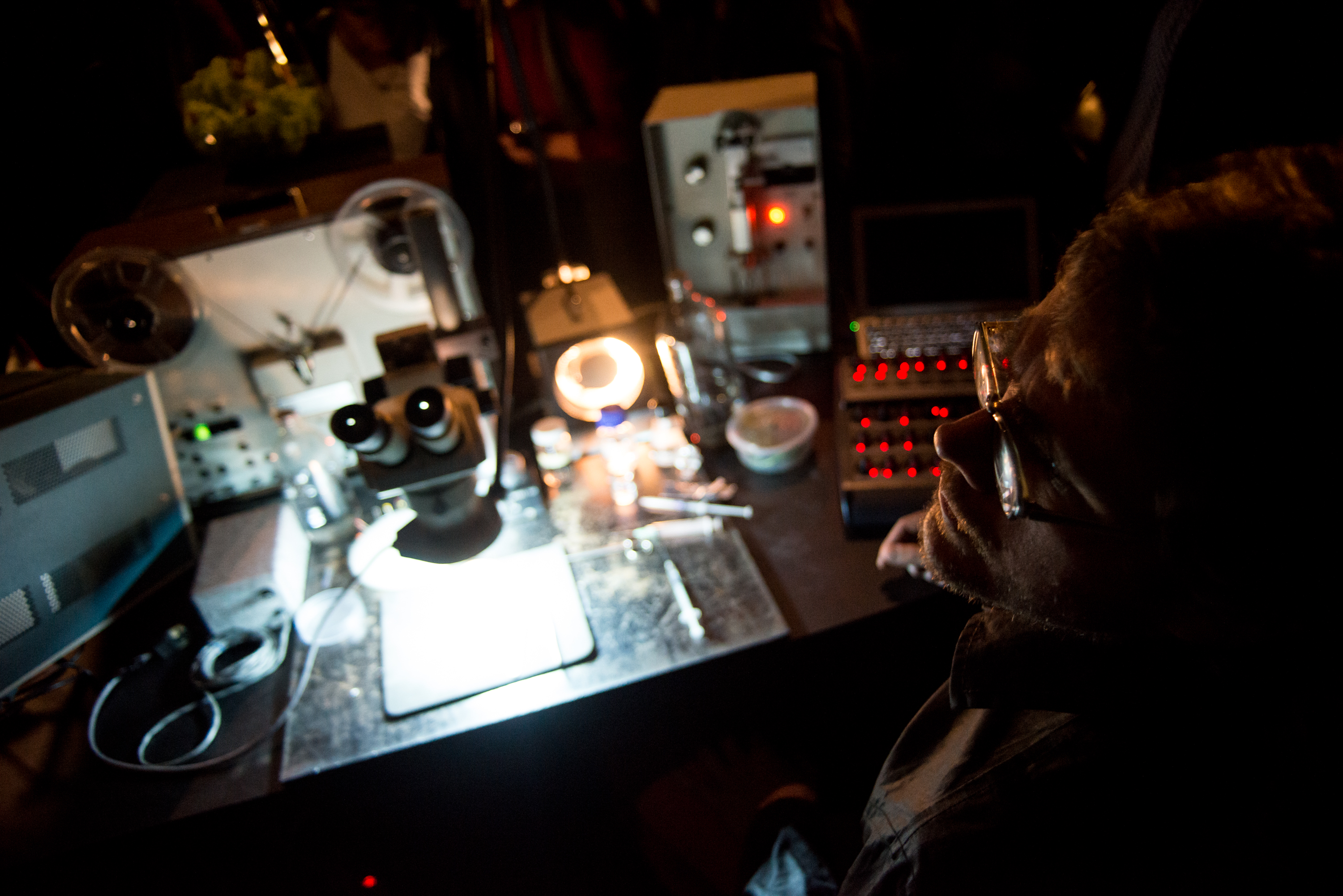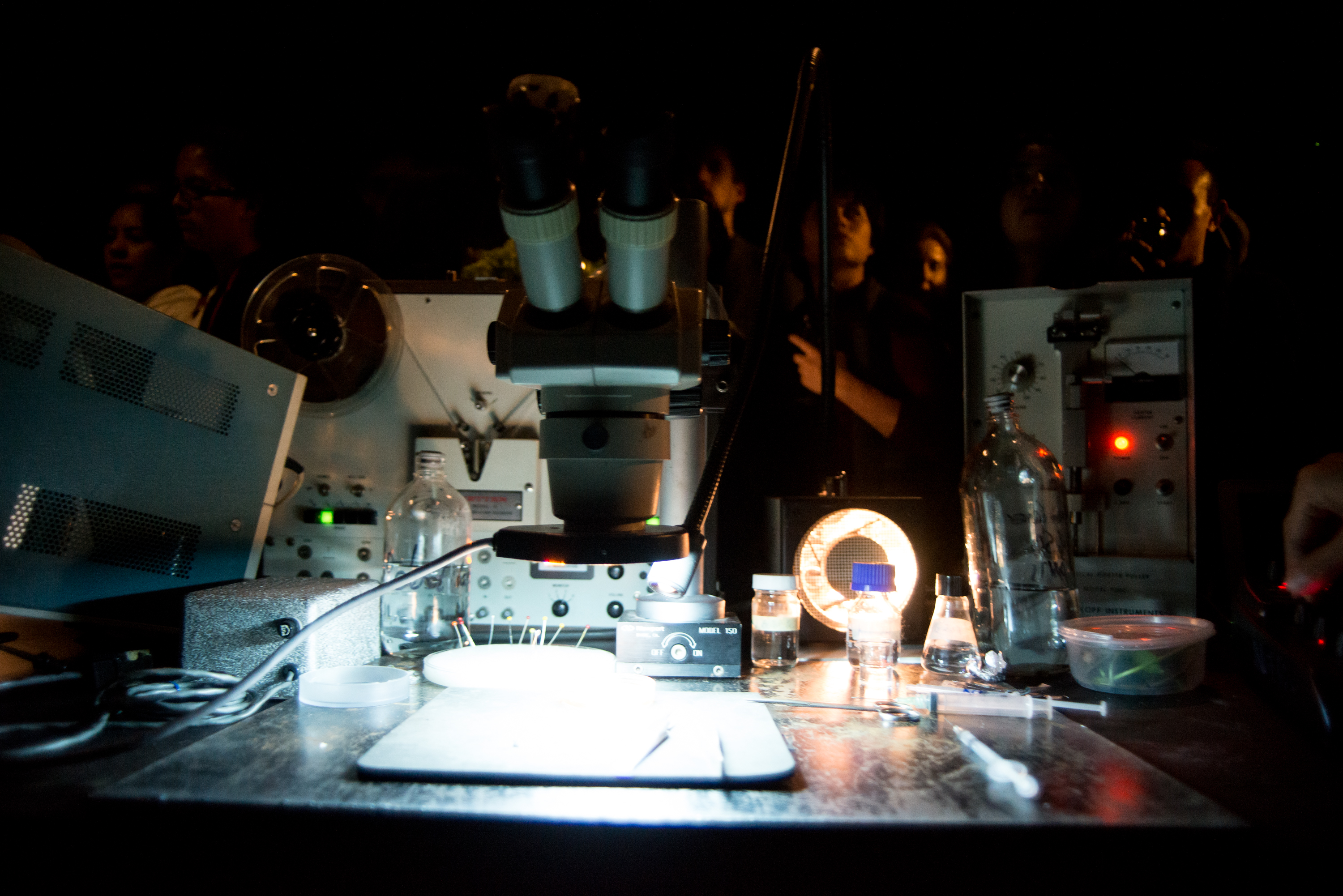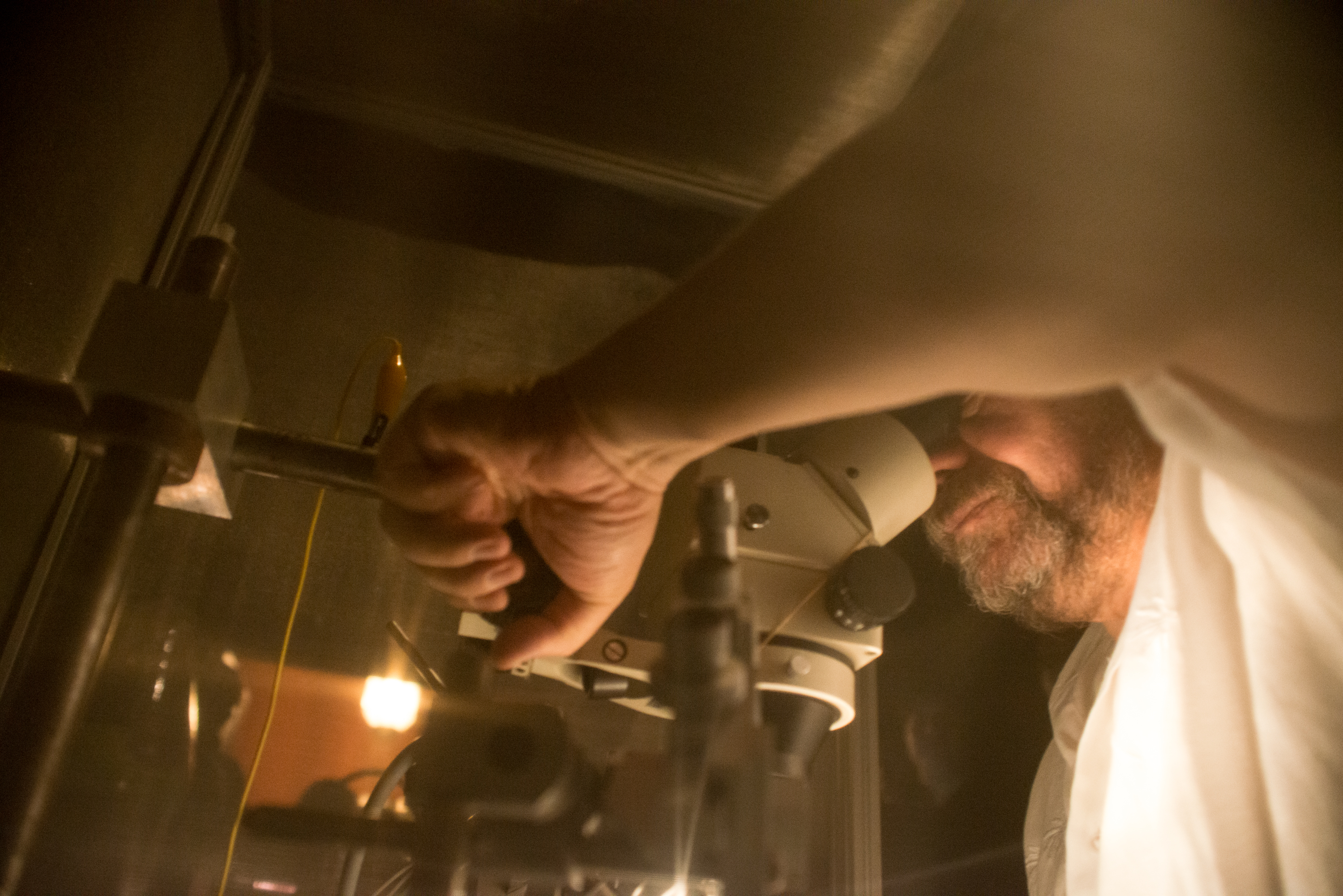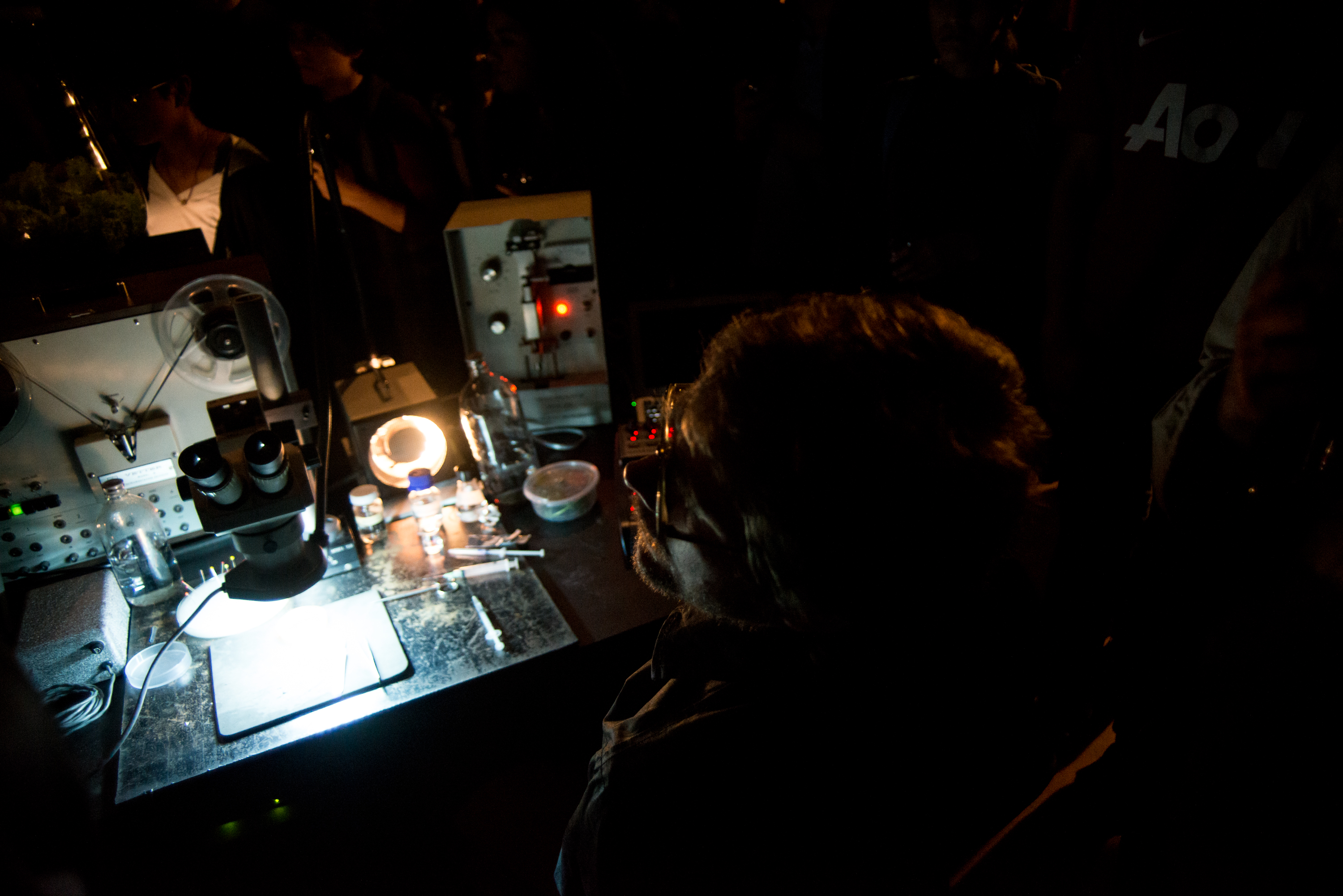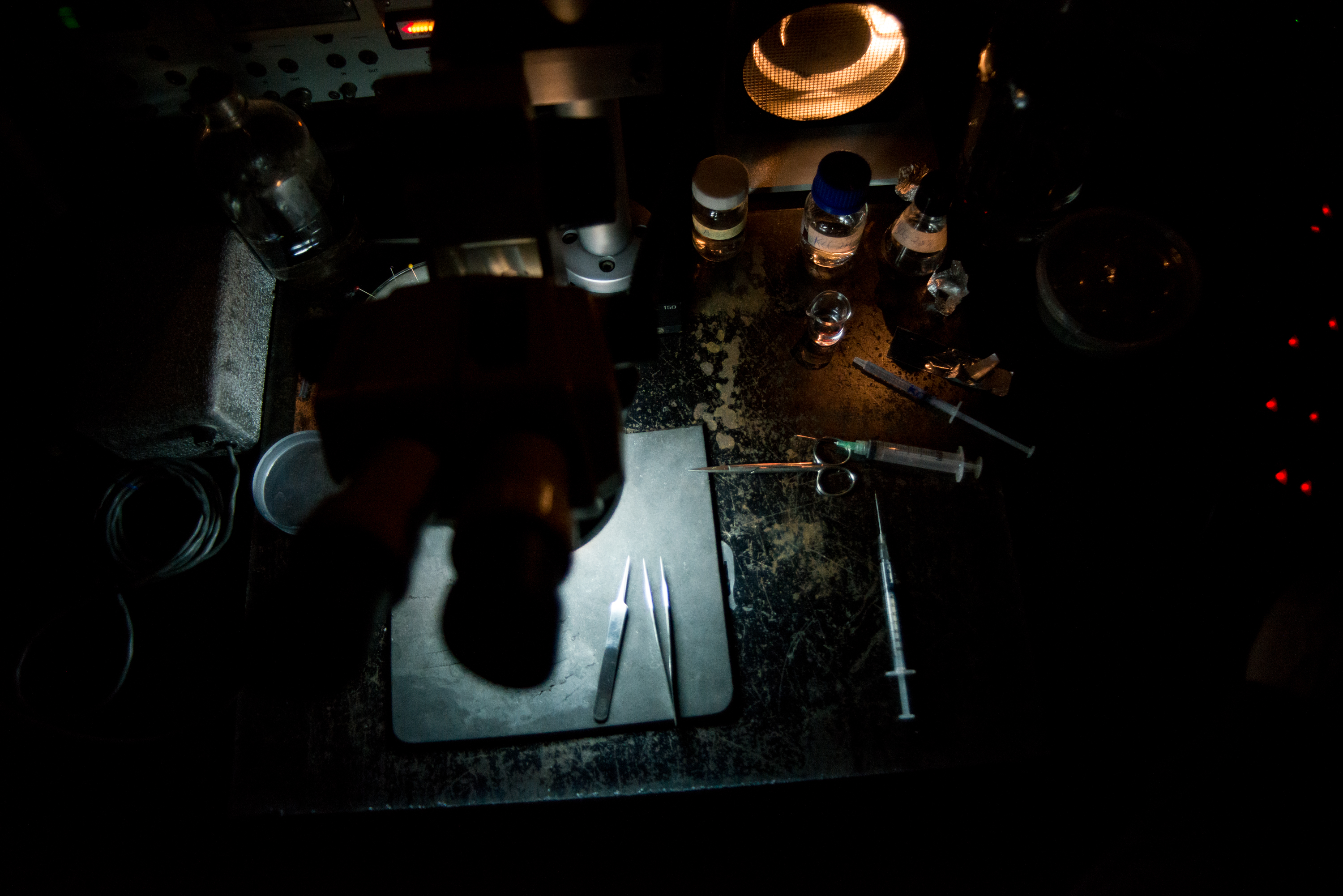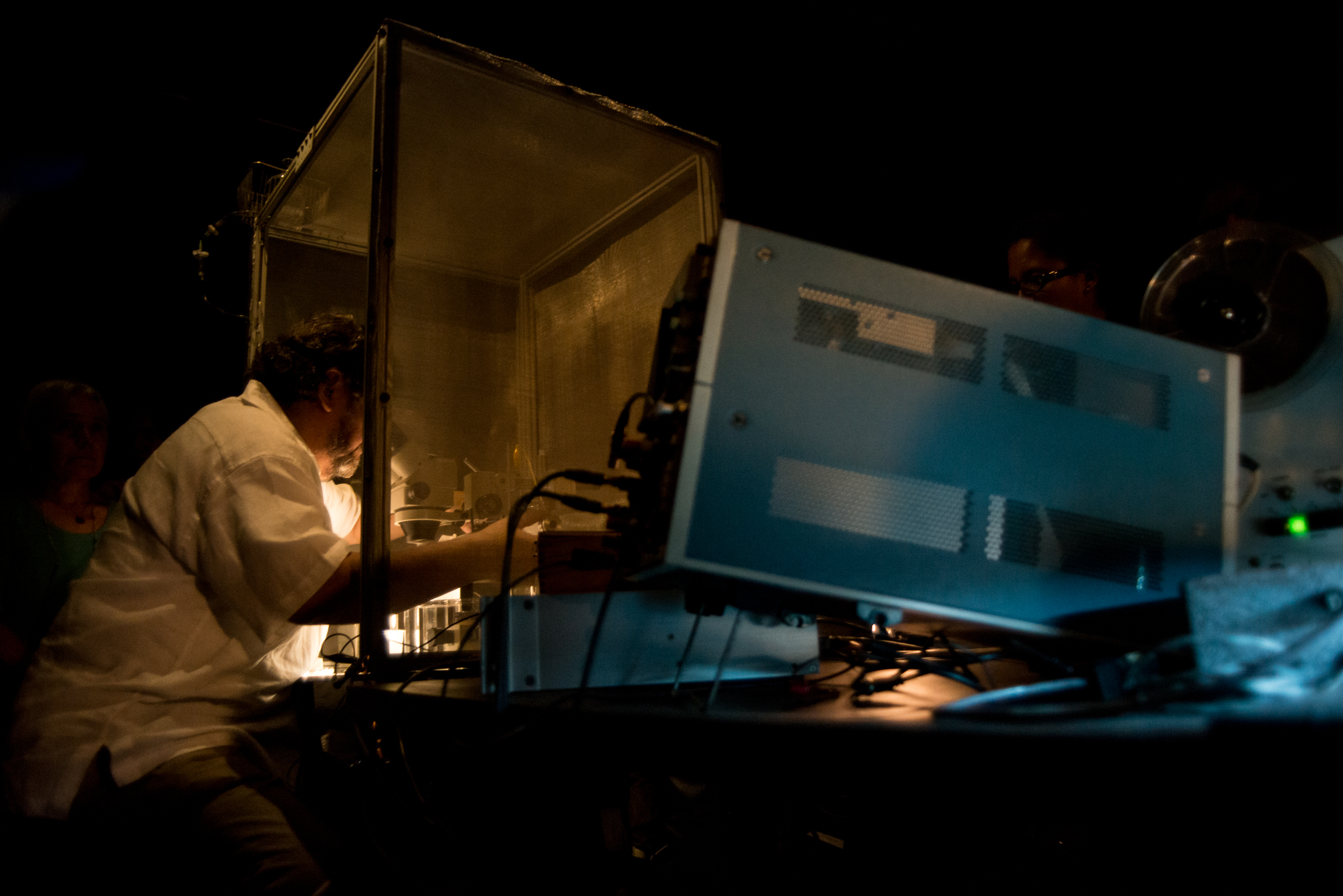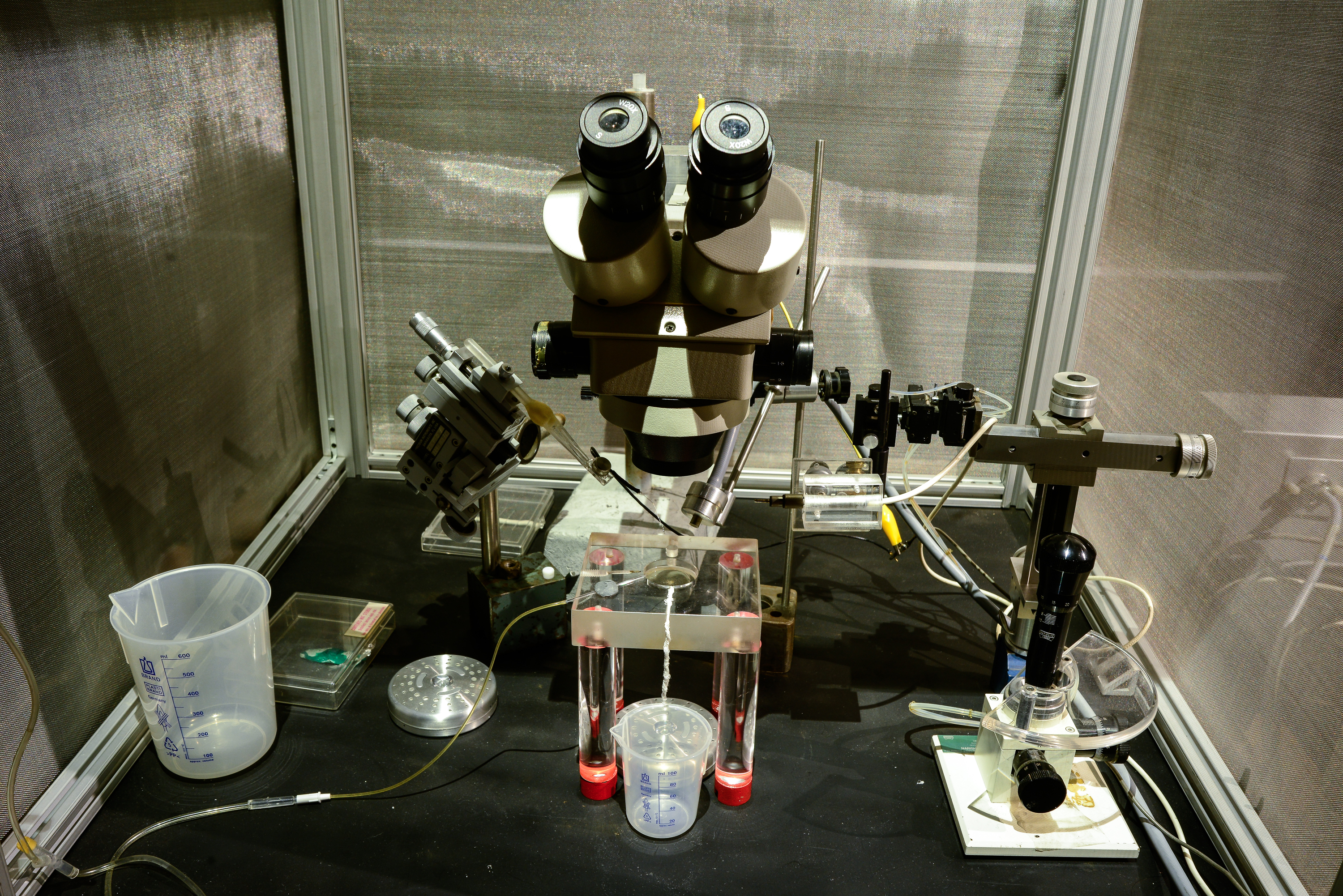Helix Aspersa
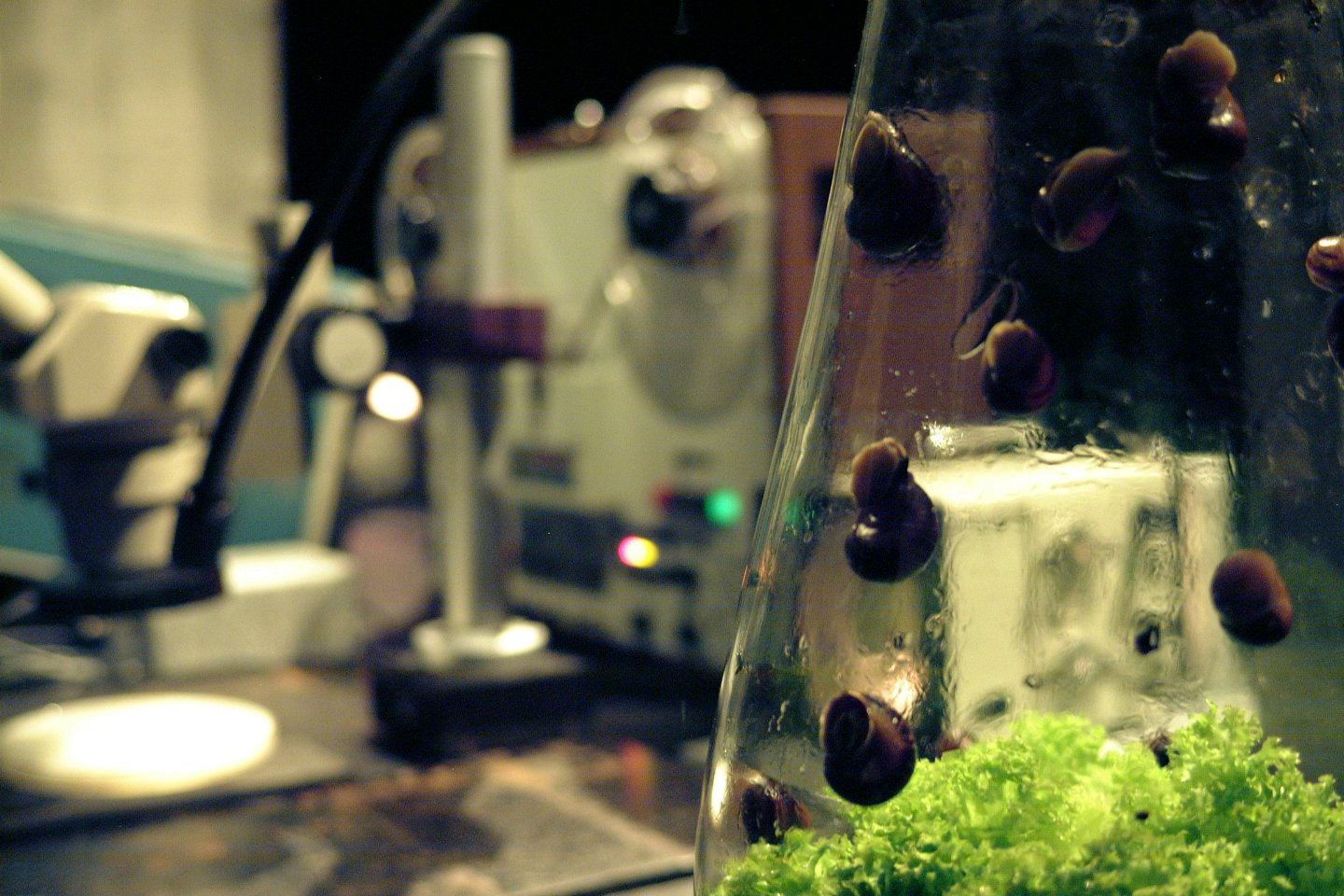
Helix Aspersa is a sound installation and sound performance in which the electrical signal of a single neuron of a snail is registered and use as main source for generating a sound experience. The artistic goal of this work is to make evident thru sound our internal consciousness and emphasize one of the elements that constitute our perception of reality, the neuron. After all, this type of cell is the minimal unit of our central nervous system and its activity reflect the behavior of a neuronal network with dynamic, expressive and intelligent behaviors.
This work is the collaboration between Hugo Solís father, neurophysiologist researcher at the UNAM University and Hugo Solís son, sound artist concerned with the use of a variety of data sources as detonators of sonic experiences.
Helix Aspersa is the scientific name of the snail. Its erotic and slow movements and the size of its neurons make it ideal for the poetic and scientific goal of this artistic project in which the equipment of a neurophysiological laboratory is placed in the gallery or auditorium.
During the performance, the pipette is created and placed on the micromanipulator. The cerebroid ganglion conformed by neurons with approximate size of 300 micron each, is maintained alive with a ringer-snail solution. Hugo father starts the process of trying to penetrate a single neuron in order to obtain the intracellular recording. If succeed the most cleaned and boosted signal is acquired. The electrical signal is amplified and filtered with the proper equipment and visualized in the oscilloscope. The pulses, which are in the range of one to a hundred hertz, are digitized in a computer where Hugo son generates the sonic transformations by applying digital filters and creates textures by looping techniques.
After the performance, in the sound installation facet of the artwork, the laboratory equipment is preserved on place and the recording of the performance of about 45 minutes is played thru speakers and looped infinitely.
Listening to the rhythmic patterns of a snail neuron is metaphorically the listening of a similar system to the one that integrates our own neural system, which constitutes our mechanism of perception. In other words, the rhythmic patterns and sounds that emanate from this artwork are the same ones that allow us to integrate what we know as the perception of the reality, the emotions, and the aesthetic phenomenon.
The electrophysiological data is part of the research about changes in the neuronal excitability realized at the Laboratory of Neurophysiology of the Faculty of Medicine under the project No. 136-2009 approved by the Research and Ethic Commission. The experimental procedures are realized following the “NORMA Oficial Mexicana NOM-062-ZOO- 1999, Especificaciones técnicas para la producción, cuidado y uso de los animales de laboratorio” and the guide of the National Institutes of Health Guidelines for the Care and Use of Laboratory Animals (revised 1996).
